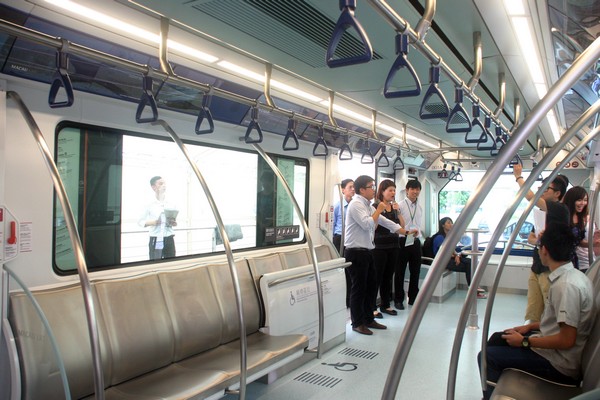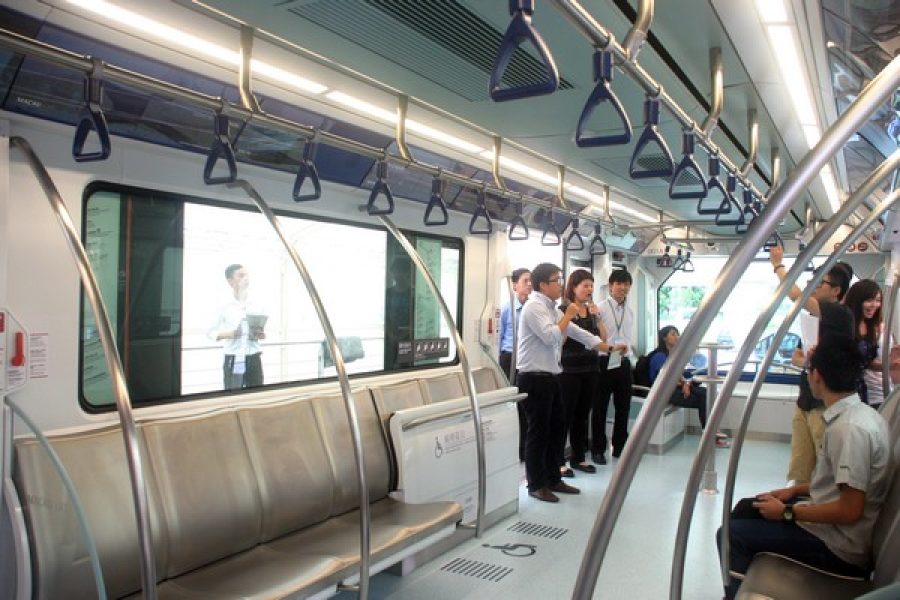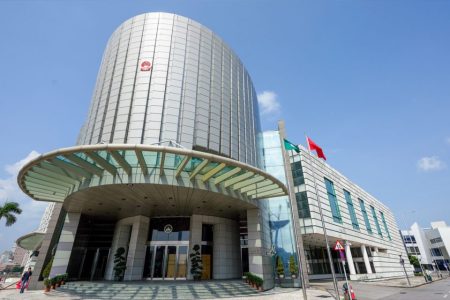A follow-up auditing report and an investigation by the Commission Against Corruption Commission (CCAC) released Thursday both slammed the government’s Transportation Infrastructure Office (GIT) for its handling of the city’s Light Rail Transit (LRT) project.
The report by the Commission of Audit (CA) is a so-called audit trail, following its first audit report of the LRT project last year, according to The Macau Post Daily.
The report released Thursday shows that the cost of the project’s first phase has been way over the original budget.
According to a previous announcement made by the office in June last year, the budget for the construction of the first phase of the LRT project has risen to about 11 billion patacas from its previous budget of 7.5 billion patacas in 2009, an increase of 47 percent. In 2007, the budget for the LRT project stood at just 4.2 billion patacas.
The first phase of the LRT, which includes 21 stations – 11 in Taipa and Cotai and 10 in the Macau Peninsula, is slated to open in the first quarter of 2015.
The Audit Commission said its report released yesterday was based on the current construction budget – about 11 billion patacas – for the first phase of the LRT project. The report found that the budgets for the two main construction projects – the depot and construction of the LRT section in the centre of Taipa – have increased 45 and 32 percent, respectively.
According to the follow-up audit report, the budget for the construction of the depot in Taipa near the airport was planned to be about 260 million patacas, but finally the GIT paid about 380 million patacas after a public tender – 120 million patacas more than budgeted for, an increase of 45 percent; meanwhile the GIT also expected the budget for the construction of the LRT section in the centre of Taipa to be about 370 million patacas but it paid the contractor about 480 million patacas – an increase of 110 million patacas, 32 percent more – after a public tender. Both tenders were completed late last year.
The Audit Commission also pointed out in its report that the 11 billion patacas budget mainly covered the costs of the main construction projects in first phase of the project – about 5.8 billion patacas; carriages and system currently budgeted at about 4.9 billion patacas and the project’s consultancy service fee set at about 310 million patacas.
The Audit Commission said that the GIT failed to calculate “accurate” amounts for any future investments in the LRT project, which may cause the government additional financial pressure. The report pointed out that the GIT based its estimates on a “static approach” when calculating its investments that were mainly based on past consumer price index data
According to the audit report, the GIT also failed to draft any guidelines about cost management but refused to apply a “dynamic approach” when drafting its budget, pointing out that even the consultancy company set to be paid 176 million patacas was capable of doing that.
The Audit Commission also said that the GIT had evaluated the performance of the consultancy company four times but never told it the respective findings.
Responding to the criticism, the GIT said that it was a difficult to draft a budget based on the “dynamic approach” model as it was affected by “uncertain elements” and vowed to release information to the public “in a timely manner” concerning the budgets for the LRT project’s new construction projects.
Meanwhile, the Commission Against Corruption said in a separate report that the GIT had failed to release “full” technical data and criteria to support the option it chose for the LRT route – which according to the current plan would pass close to residential buildings in Nape.
According to the CCAC report, there had been two alternatives for the LTR route through Nape and” Zape – one was not to pass too close to residential buildings while the other one did.
However, the GIT chose the route that passed closest to residential buildings in Rua de Londres but failed to provide “convincing reasons” as to why it decided to do so, according to the CCAC report.(Macaunews)






